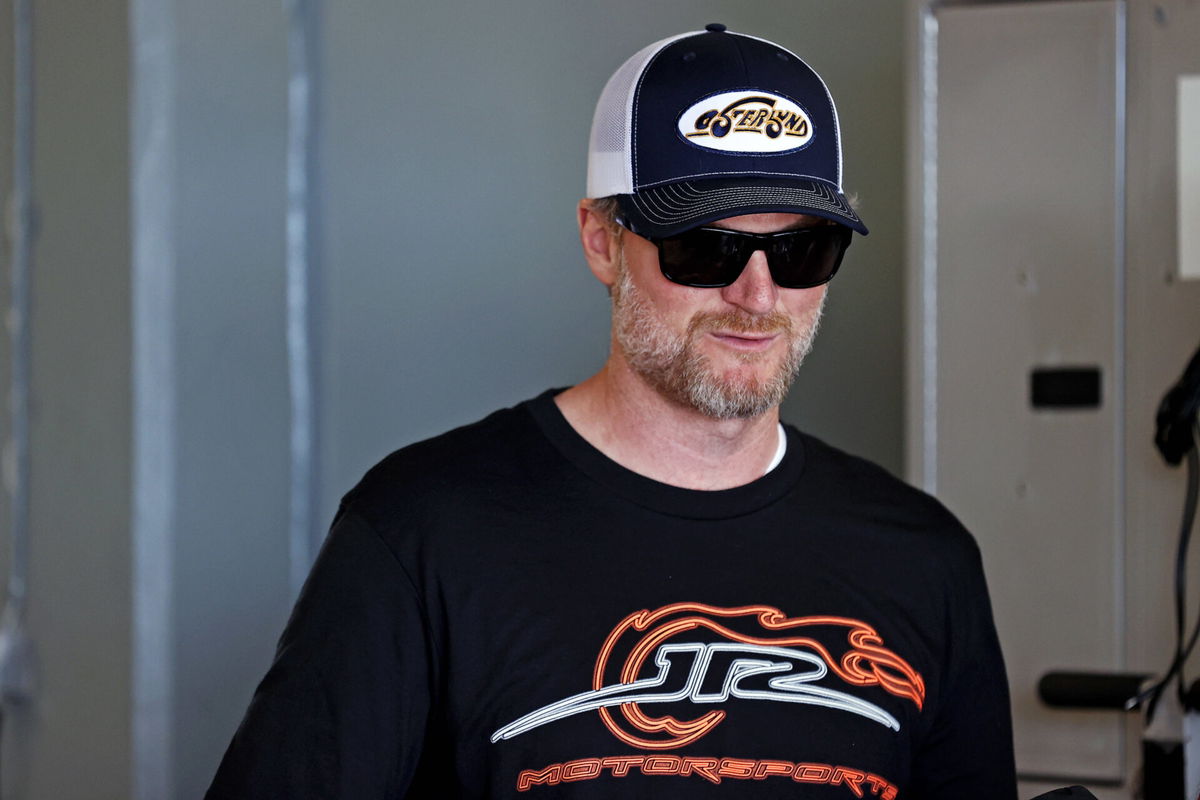
Imago
NASCAR, Motorsport, USA Cup Practice Feb 15, 2025 Daytona Beach, Florida, USA NASCAR team owner Dale Earnhardt Jr. during practice for the Daytona 500 at Daytona International Speedway. Daytona Beach Daytona International Speedway Florida USA, EDITORIAL USE ONLY PUBLICATIONxINxGERxSUIxAUTxONLY Copyright: xPeterxCaseyx 20250215_pjc_bc1_002

Imago
NASCAR, Motorsport, USA Cup Practice Feb 15, 2025 Daytona Beach, Florida, USA NASCAR team owner Dale Earnhardt Jr. during practice for the Daytona 500 at Daytona International Speedway. Daytona Beach Daytona International Speedway Florida USA, EDITORIAL USE ONLY PUBLICATIONxINxGERxSUIxAUTxONLY Copyright: xPeterxCaseyx 20250215_pjc_bc1_002
Under the late-summer skies of Portland, the 2025 Pacific Office Automation 147 unfolded like a masterclass in dominance. Connor Zilisch stormed out of qualifying, seizing pole with a blistering 1:13.380 lap, and the #88 Camaro never looked back. He swept both stages and led 70 of 78 laps, orchestrating what seemed a textbook win, until a late-race caution reshuffled the deck and invited mayhem, setting the stage for an unexpected win. But that twist wasn’t the usual wreck or spin; it revealed a peculiar escape zone that’s becoming a hot topic in NASCAR circles.
Watch What’s Trending Now!
Portland’s iconic Shelton Chicane, meant as a safe escape route, a forced “self-penalty” for missed entries, became the crux of debate as Zilisch sliced through it in overtime, emerging unscathed and unhindered while chaos reigned behind him. In contrast, IndyCar and other series often enforce clear long-lap penalties or rigid deterrents, ensuring shortcuts come at a real cost, but in NASCAR’s execution at PIR, that chicane seemed more forgiving than feared. The question now isn’t just about whether Zilisch crossed the line correctly, but whether the track’s design crossed a line too.
ADVERTISEMENT
How a chicane sparked more questions than excitement
In the Hauler Talk podcast, Nate Ryan and Mike Forde talked about how Zilisch’s victory at Portland wasn’t just about speed, but it came down to a rulebook loophole that has got everyone talking. “It can’t happen without a little bit of controversy of some sort. Final overtime restart in Portland. Turn 1 is very interesting, where you basically sort of have to make a slam on the brakes, sort of right-hander,” Ryan noted. “Connor Zilisch kind of blows that first turn and went through a maze. It’s basically a chicane there that you go through if you miss the first turn. So, Zilisch did that, wins the race.” This chaos unfolded in Portland’s notoriously tight A-frame chicane tucked at the end of the front straight on the 12-turn, 1.964-mile road course.
In this final overtime restart, the pack surged, some overshot, and the chicane turned into a trapdoor. “A few guys behind him were not able to navigate that chicane,” he continued. “They actually just went around the turn and then through, what would be Turn 2, there was another car spinning. So, I want to get the breakdown on all of that.” Although the move was explained by Forde, who revealed that NASCAR rules for Portland require that if a driver misses that corner, they must traverse the off-course penalty zone, the A-frame chicane, before rejoining. “I ran it in practice and I was like, ‘it’s not even that slow. As soon as I hit the brakes, I wheel-hopped, but kind of committed to it as soon as realized I wasn’t going to make the corner,” said Zilisch after the race.
WHAT A FINISH!!!@ConnorZilisch captures his 8th #XfinitySeries victory of the season with a dramatic overtime win in Portland! pic.twitter.com/IIOZHy14A8
— The CW Sports (@TheCW_Sports) August 31, 2025
ADVERTISEMENT
Forde further chimed in to slam the chicane design. “We’re not going back to Portland next year. So it’s a moot point for now, but I can see it’s coming back,” he said. “Didn’t love how that turned out in all candor, what Conor did. We reviewed it after the race and he did follow the rules as written. And it was something that we did discuss within going into that race, what kind of ramifications would there be if there was a blown short cutting of the track situation there.” Indeed, it is something that the stewards clearly anticipated. Discussions pre-race also included possible penalty adjustments. In other events like COTA, long-lap penalties or stop-and-go zones are sometimes used instead of immediate shortcuts. Yet in this case, the rulebook’s prescribed penalty remains, and Zilisch complied.
“But in looking at the course a little bit more and thinking through it over the last couple of days, I think where we landed was if we go back, I would imagine that there would be a little bit of a long lap put in,” he continued. “I believe they said something around turn 11… So everything that we feel how we ruled at the end of the race was by the rule book. But I think reviewing it, we probably make some tweaks in hindsight.” This mirrors how NASCAR upheld a major disciplinary ruling in 2024, stripping points and playoff eligibility from Austin Dillon after an international wreck. Ultimately, the Portland debate underscores NASCAR’s growing challenge of adapting traditional oval-bred regulations to modern road courses, where track limits and penalty zones can decide races as much as driver skill.
ADVERTISEMENT
As the sport expands its calendar with driver layouts, from COTA to Chicago’s street course, striking a balance between strict enforcement and fair competition will remain critical to maintaining credibility with both drivers and fans.
Top Stories
What Is NASCAR’s 5-Strike Rule That Could Change Its Future? Check All Details Here
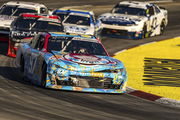
Rick Hendrick Strikes Fear in NASCAR Fans With Chevy’s New “Illegal” Car
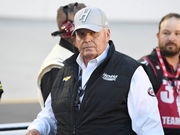
Dale Jr. Reveals How Permanent Charters Could Turn NASCAR Into a Billionaire’s Club With a Brutal Reality Check
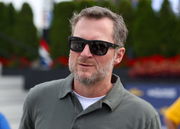
Jimmie Johnson’s NASCAR Driver Sends Ripples Through Garage With Early Retirement Confession
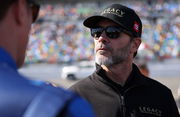
Martin Truex Jr’s Former Crew Chief Ends 12-Year Fight In Huge Personal Announcement

Dale Jr’s colleagues sound off on NASCAR’s chicane loophole
Connor Zilisch powered through collarbone pain to dominate from pole at Portland, but the final overtime restart cast a shadow over his win. “It hurt, but it hurt so good,” Zilisch admitted post-race, though the chatter quickly shifted from his resilience to NASCAR’s handling of chicane shortcuts.
ADVERTISEMENT
On the Door Bumper Clear podcast, Bubba Wallace‘s spotter, Freddie Kraft, discussed the controversy. He pointed out that Zilisch had practiced the penalty route and gained from it, saying, “Connor took advantage of them… when he gets into Connor, it knocks Connor offline, and Connor runs this line through the little Joker deal there.” Kraft stressed that while Zilisch at least attempted part of the chicane, others like Riley Herbst, Austin Hill, and AJ Allmendinger “hooked left entirely,” highlighting how inconsistent enforcement allowed multiple drivers to escape without penalty.
Kraft didn’t mince words on what NASCAR should have done: “I think that Connor should have had to do a stop-and-go. I give him credit for at least admitting that his practice was fast.” TJ Majors echoed that sentiment, warning, “All the cars inside that curb should be stop and go.” Their debate exposed deeper flaws in NASCAR’s road course penalty system, echoing issues seen at the Indianapolis road course, where cutting corners often rewarded mistakes rather than punishing them.
ADVERTISEMENT
ADVERTISEMENT
ADVERTISEMENT

